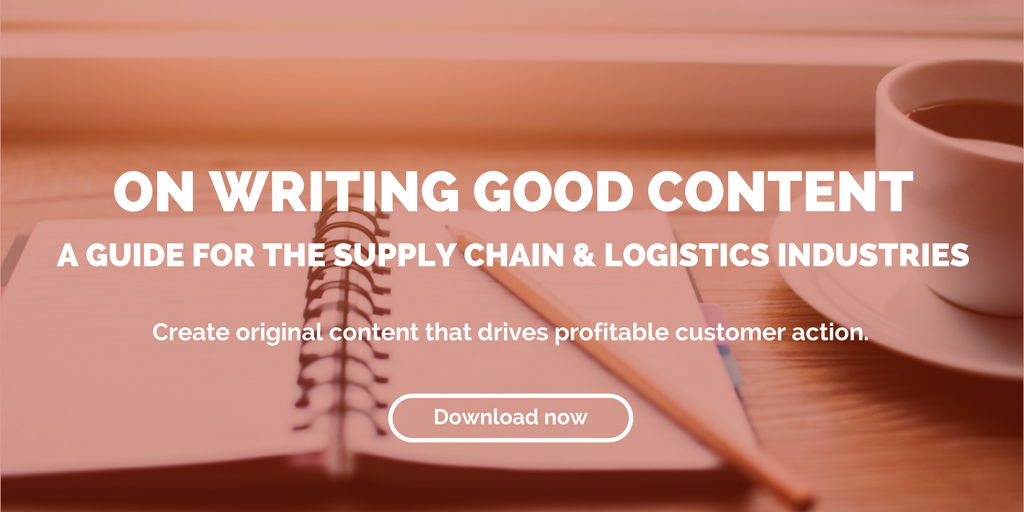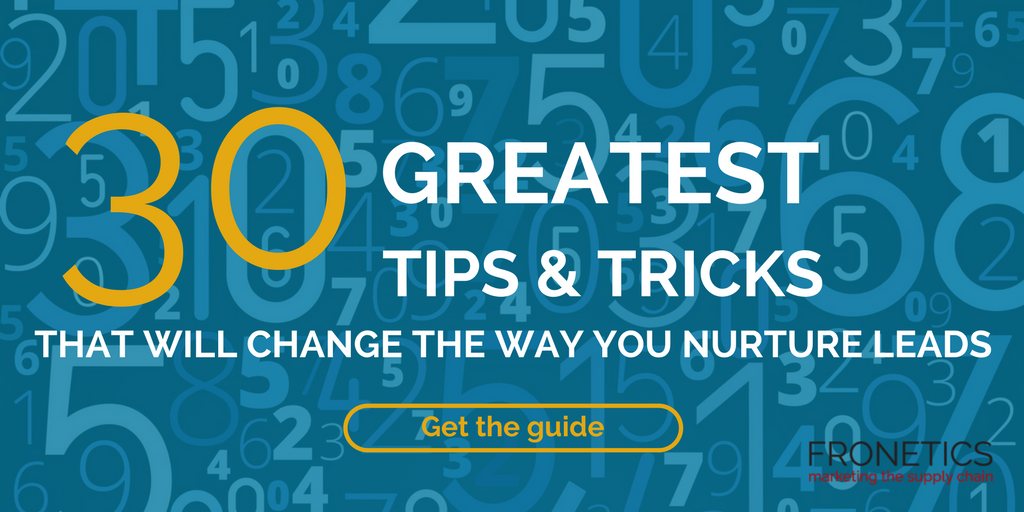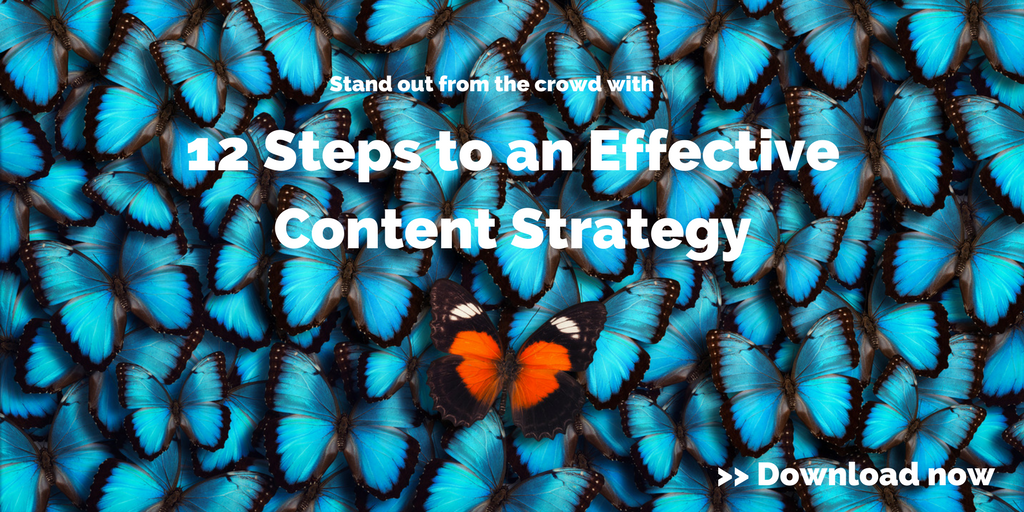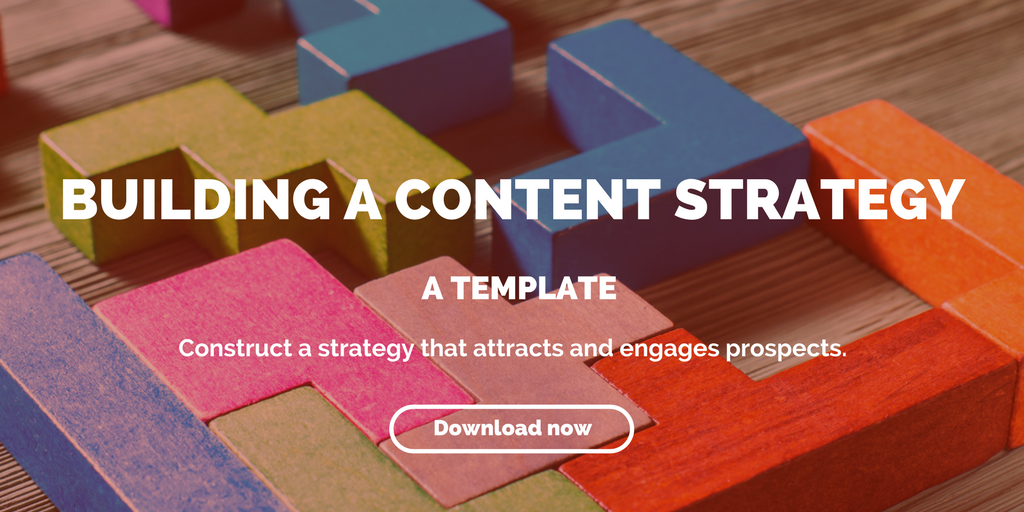
by Fronetics | Oct 2, 2018 | Blog, Content Marketing, Leadership, Manufacturing & Distribution, Marketing, Strategy, Supply Chain
Infographics are a content powerhouse, but creating them isn’t always easy. These five tips will help you make the most of this format.
Infographics can be one of the most effective content mediums. We know that digital natives, who make up the majority of B2B buyers today, prefer short-form, highly visual content. So infographics make a lot of sense when it comes to speaking their language.
[bctt tweet=”Infographics can be one of the most effective content mediums. We know that digital natives, who make up the majority of B2B buyers today, prefer short-form, highly visual content. ” username=”Fronetics”]
Infographics are also prime candidates for reposts on social media. But, if you’ve ever tried to create one yourself, you know making an effective infographic is a lot harder than it sounds.
It might seem daunting at first, but these five tips will go a long way to help you in creating infographics that are effective in engaging supply chain buyers.
5 tips for creating infographics that engage supply chain buyers
1. It’s all about the title
Well, maybe not all, but your title does matter a lot. When it comes to infographics, your audience will definitely be judging a book by its cover. This means that your title should be accurate, short (70 characters or less), descriptive, and engaging. This is how your audience will decide whether they’ll click and read.
2. Colors matter
You’d be surprised by how much people are influenced by color in their content choices. The color scheme you choose should make your readers feel comfortable and should be visually appealing. This generally means sticking to two main colors and using no more than four colors. Use clear, bold colors for your main colors, and subtle, warm tones for complimentary colors.
3. Bump up your SEO
There aren’t a lot of downsides to infographics, but, unfortunately, there is one: publishing them on your blog doesn’t do much for your SEO, since text in infographics is contained in the image and isn’t recognized by search bots. But there’s an easy way around this: Include a transcript of your text with your graphic. I recommend writing at least 350 words, in addition to the graphic, to boost SEO.
4. Keep it simple
There’s a reason that simplicity is king when it comes to graphic design online. Increasingly, designers and businesses are favoring clean, minimalistic layouts. This means few unnecessary elements and plenty of white space so as not to overwhelm readers and to convey information without unnecessary distractions.
5. Get interactive!
If you’ve mastered creating infographics and are feeling ambitious, try taking on the next big thing: interactive designs. This means your readers can engage with your content, whether by hovering over it, clicking on it, or even answering questions or taking a quiz.
There are a number of infographic-creation tools available on the internet these days. At Fronetics, we really like using Canva, which has plenty of templates that are easy to use and do a lot of the design work for you.
What are your tips for creating infographics?
Related posts:


by Fronetics | Sep 24, 2018 | Blog, Content Marketing, Current Events, Logistics, Marketing, Social Media, Strategy, Supply Chain
A new generation of buyers, digital natives, is shaking up the B2B purchasing landscape. Is your business ready to meet them online?
Digital natives, who now make up the majority of the B2B purchasing landscape, have completely changed how vendors need to market and sell to buyers.
[bctt tweet=”Digital natives, who now make up the majority of the B2B purchasing landscape, have completely changed how vendors need to market and sell to buyers.” username=”Fronetics”]
In fact, according to a study of millennial buyers by Merit, some 73% of 20 to 35 year olds are involved in product or service purchase decision-making at their companies. Not only that, about half of all B2B product researchers are digital natives — and the number is rising by the year, according to a Google/Millward Brown digital survey of buyers.
It goes without saying that the B2B purchasing landscape is going through a radical shift. Here are 6 ways that digital natives have changed B2B purchasing — and how companies have to respond.
6 ways digital natives are changing B2B purchasing
1. Product searches begin with a generic web search.
This means that companies now have to focus on SEO and producing informative content. First impressions are everything in B2B markets, and when it comes to digital natives, your first impression is conveyed through every piece of content you produce and distribute online.
2. They bypass sales people.
So companies should aim to switch from primarily outbound marketing to inbound marketing. This doesn’t mean that salespeople are going to be out of jobs. But it does mean that sales and marketing need to work together in new ways.
3. Online search, vendors’ websites, and peer/colleague reviews are their most important sources of information.
It’s time to place focus on SEO, website development, social media, influencer marketing, and B2B review sites. Again, your reputation depends on your online content. Are you establishing your brand as a trusted source of information?
4. They prefer short bursts of information, often in visual formats.
Not only that, they find phone calls tedious and disruptive. Companies need to be strategic about the type and format of any content they distribute. Emails and websites should be mobile-friendly, and visual formats like infographics are a highly effective way to present dense information.
5. Social media is a preferred source.
These digital natives are relying on social media for information on brands, products, and services. How does your social media presence stack up?
6. They know what they want by the time a salesperson enters the process.
This new generation of buyers already has a clear idea of the value they expect from a vendor by the time they’re ready to move down the sales funnel. So vendors need to deliver on the promises made by their content.
How is your company accommodating the research and purchasing habits of digital natives?
Related posts:


by Fronetics | Sep 17, 2018 | Blog, Content Marketing, Logistics, Marketing, Social Media, Strategy, Supply Chain
Today’s B2B buyers are mostly digital natives who get the majority of their purchasing information from online searches, vendor websites, and peer recommendations.
From a content marketing perspective, knowing where your buyers get their information is critical to an effective strategy. So what are most important sources of information for today’s B2B buyers? 20 years ago, you might have named things like product info sheets or sales reps. But not anymore.
B2B buying has completely evolved, thanks in large part to the increasing percentage of digital natives who now make up the B2B purchasing landscape.
Is your content marketing strategy meeting buyers where they are? Here are the three most important sources of information for B2B buyers.
3 top sources of information for B2B buyers
1. Online search
Not only is an online search the first move for 62% of B2B buyers, 94% of buyers report using online research at some point during the purchasing process. And this isn’t a surprise, when you consider that, according to a study of millennial buyers by Merit, “some 73% of 20 to 35 year olds are involved in product or service purchase decision-making at their companies.”
[bctt tweet=”Not only is an online search the first move for 62% of B2B buyers, 94% of buyers report using online research at some point during the purchasing process.” username=”Fronetics”]
So what does this mean for your business? Gone are the days when a simply thinking about keyword rankings was enough to boost your SEO. In our four-part series on writing for SEO, we address how search engines and the search landscape have changed over the past several years. Improving your search ranking can seem like a complex process, but in the end it all boils down to one thing: quality content, presented in a clear and compelling manner.
2. Vendor websites
So buyers conduct their online search. And if you’ve done your content marketing homework, they find your business. How does your website stack up?
According to Bain’s global customer insights chief Eric Almquist, by the time they reach your website, buyers “will have already formed a strong opinion about many aspects of the value expected from a vendor.” For this reason, your website should “provide a wealth of information on these types of value, with details on where… products have been successful.”
Your website should be one of your primary assets. If you don’t give visitors plenty of easy, attractive opportunities to convert on your website, content marketing won’t generate leads for you. Your content should be organized and clear, presented with the goal of helping your potential customers. And opportunities for conversion should be everywhere.
3. Peers and colleagues
As digital natives step into purchasing roles in the supply chain, they’ve “brought their consumer habits to the B2B world,” says Almquist. This means that a big part of the purchasing process involves review sites, where purchasers seek the opinion of their peers and colleagues. “Reviews will tell the buyer how a vendor performs on many ease-of-doing-business elements long before the buyer has actual experience with that vendor.”
This aspect of content marketing can seem daunting for many businesses because of the perception that what’s on these sites is completely out of your control. But with the right strategy in place, review sites are actually a big opportunity for your business.
For a start, vendors “should encourage customers who are advocates of the company to provide reviews on relevant sites.” It’s also important to take an active role on these sites, responding to customer reviews — even the occasionally inevitable bad ones.
Says Almquist, “First impressions matter as much as ever in B2B markets. Today though, that first look comes through websites, user forums, and quick case studies, not flesh-and-blood sales pitches.”
With a well-thought-out, data driven content marketing strategy, you’ll be ready to meet digital natives where they are.
What sources of information for B2B buyers do you focus on?
Related posts:


by Fronetics | Aug 1, 2018 | Blog, Content Marketing, Marketing
The Fronetics blog will be taking a brief summer vacation.
Starting today, the Fronetics blog will be taking a little hiatus. Don’t worry — it’s only for 2 weeks! We are working on some exciting things behind the scenes and can’t wait to share them with you.
We’ll be back with our regular posting schedule beginning Wednesday, August 15. If you find yourself missing us while we’re away, feel free to check out our ever-growing list of resources for supply chain and logistics marketers.
Or feel free to browse through our recent posts. We’ve been covering some really interesting stuff lately. There’s a little something for everyone — whether you’re looking for industry marketing trends or DIY content marketing guides. Here are a few favorites:
We hope you have a safe, wonderful, and relaxing end of summer, and we look forward to having you back in two weeks!


by Fronetics | Jul 19, 2018 | Blog, Content Marketing, Logistics, Marketing, Social Media, Strategy, Supply Chain
In part three of our series on effective lead generation and nurturing, we walk you through the components of effective landing pages that convert visitors to leads.
If you’ve been keeping up with our four-part series on effective lead generation, you should be up to speed on creating a valuable offer and a call-to-action that works. The next step in a finely tuned lead generation process is a landing page that converts.
Why does my offer need a landing page?
[bctt tweet=”Landing pages are crucial, and brands miss out on opportunities when they fail to optimize them. According to HubSpot, marketers see an average 10% conversion rate on landing pages — that represents a huge amount of missed opportunities.” username=”Fronetics”]
Landing pages are crucial, and brands miss out on big opportunities when they fail to optimize them. In fact, according to HubSpot, marketers have seen an average 10% conversion rate on landing pages — that represents a huge amount of missed opportunities. Brands that have it right, those that focus on designing for conversions, reap the benefits in big ways.
Your primary objective for a landing page is to get visitors to submit their contact information in exchange for the offer. At this point in the process, your potential customer has already engaged with your call-to-action, meaning he or she is interested in your offer. When they get to your landing page, everything they find there should affirm their choice to and assure them that the content they are about to download is going to be relevant, interesting, and valuable.
Designing landing pages that convert
So what are the hallmarks of a great landing page? Starting with the basics, your landing page should briefly, simply, and clearly describe the benefits of your offer. It’s important that there be as few distractions as possible. For example, make sure the page doesn’t have a top navigation menu. Bonus points for including ways to share your offer on social media.
Additionally, you should make sure that your landing page doesn’t include links to other things on your website, as they can distract the lead and perhaps send them somewhere else on your website where they can find the information you’re presenting in your offer.
As you design your landing page, keep this checklist in mind:
- Is it clean, organized, and clearly presented?
- Is there any ambiguity about where or how leads should enter their information?
- Does it describe the benefits of my offer?
- Is it free of extraneous or distracting content or links?
- Is it mobile-friendly?
- Does it contain easy ways to share on social media?
If you follow these tips for landing pages that convert visitors to leads, we’re confident you’ll start to see an uptick in your website conversion rate almost immediately.
Related posts:











